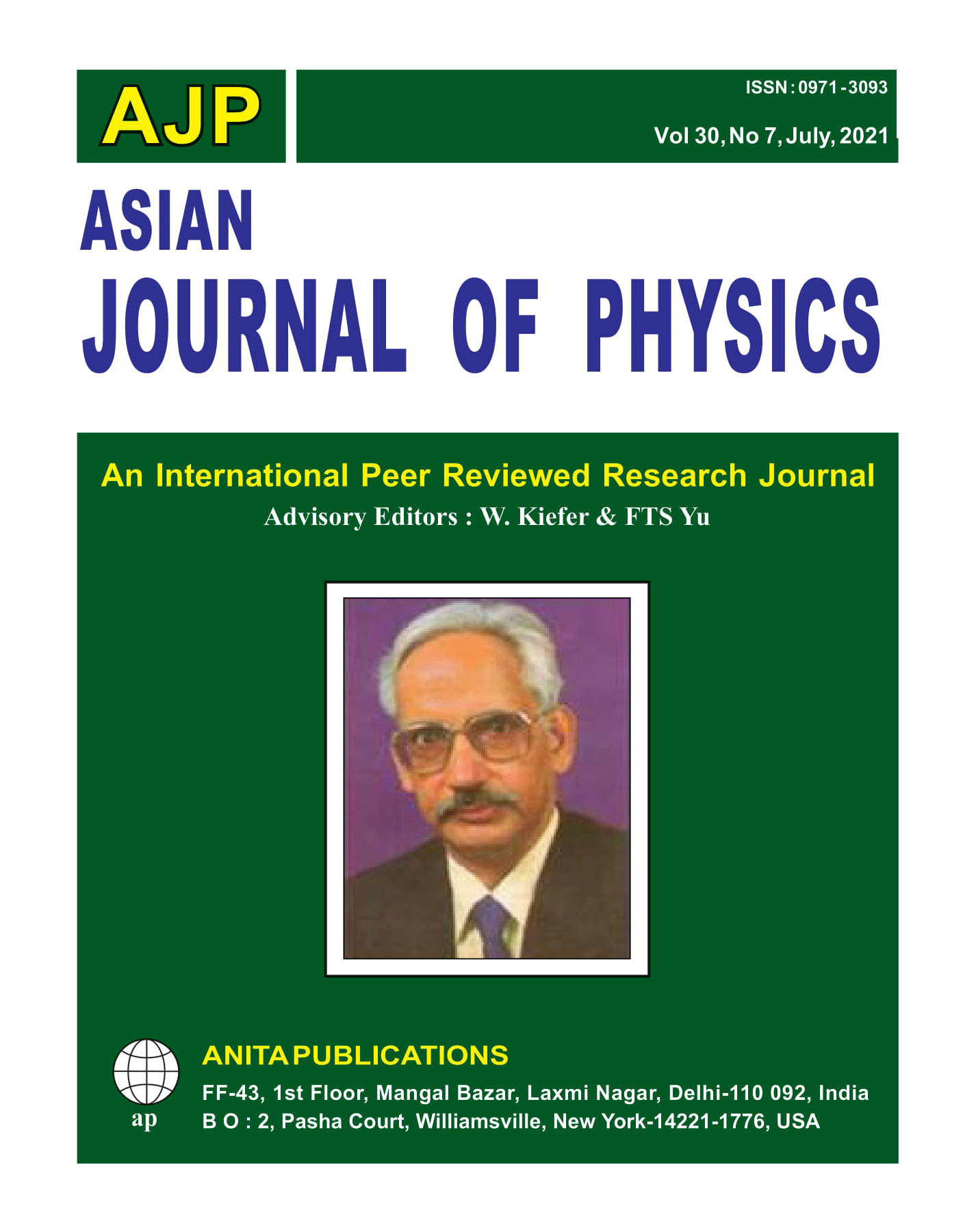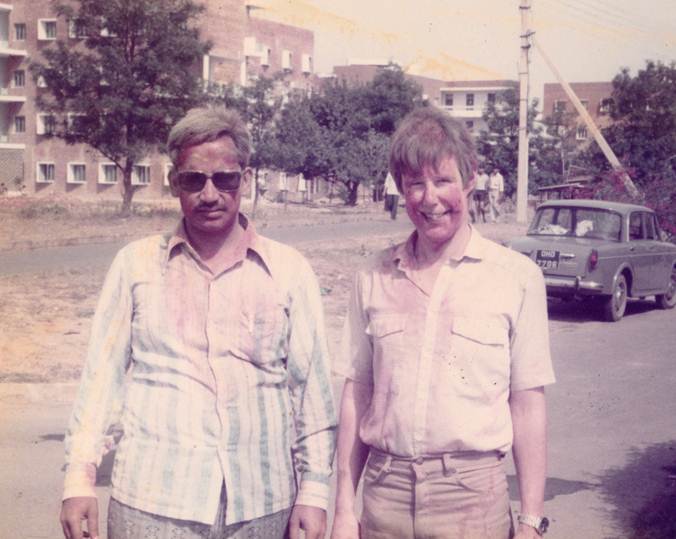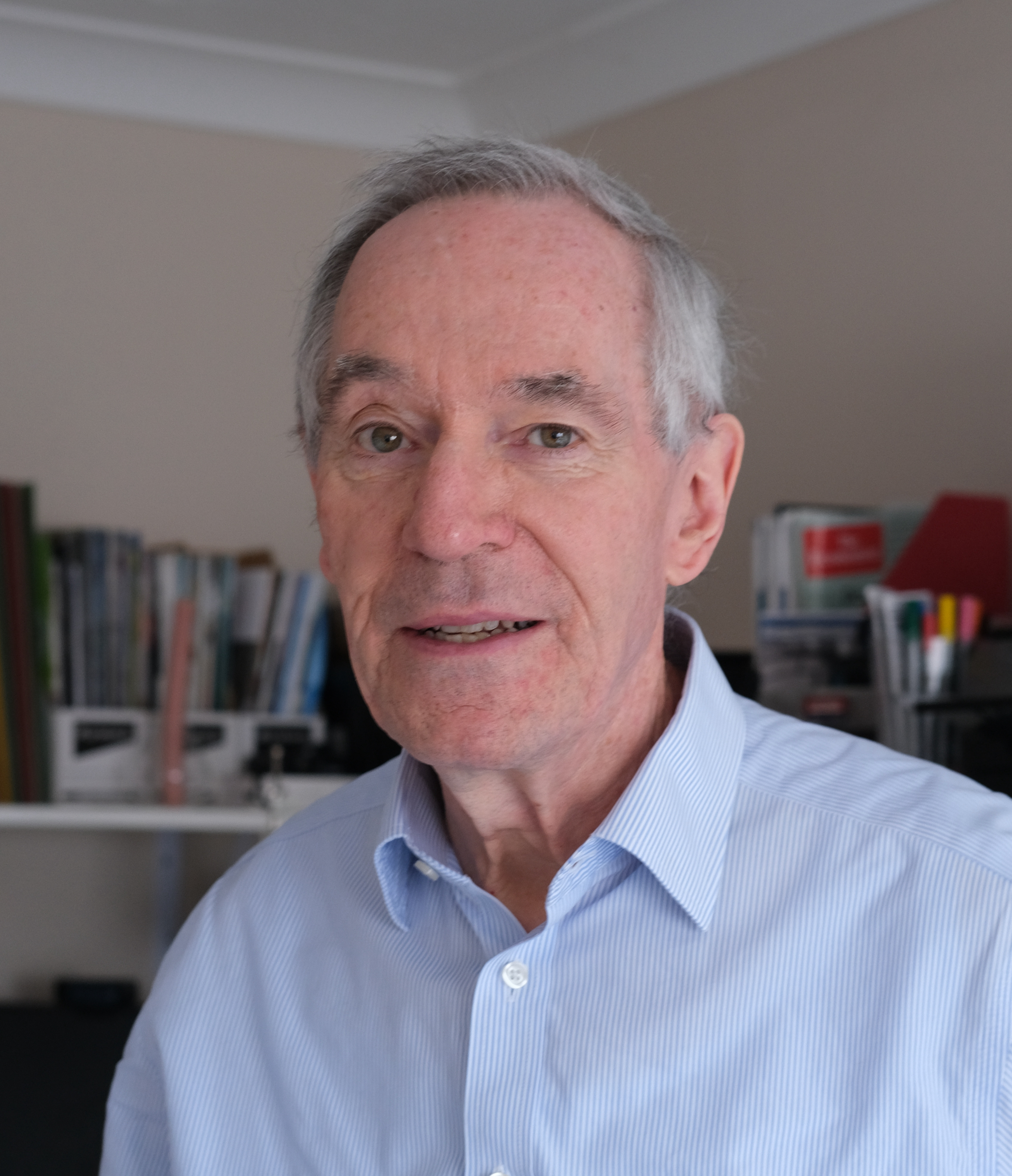
ap

ap
An International Peer Reviewed Research Journal

AJP
SSN : 0971 - 3093
Vol 30, No 7, July, 2021
Asian
Journal of
Physics
_________________________________________________________________________________________________________________________________
Volume 30 No 7 July 2021
_________________________________________________________________________________________________________________________________
A Special Issue Dedicated
to
Prof Kehar Singh
Guest Edited By : H C Kandpal & Vinod
Rastogi
Anita
Publications
FF-43, 1st Floor, Mangal
Bazar, Laxmi Nagar, Delhi-110 092,
India
___________________________________________________________________________________________________________________________________
Papers in PRESS
Biography:
Kehar Singh
Effect of aberration on the focusing of optical vortices and the use of vortex spatial filters in cryptography
V V Kotlyar
Topological charge of a superposition of optical vortices
V V Kotlyarand AA Kovalev
Optimization of high numerical aperture focusing of Gaussian beams, and a new parameter for polarization homogeneity
Colin J R Sheppard
Advances in sampling theory and methods: A review
L Yaroslavsky
Analysis of image artifacts in wavefront coding imaging systems.
E Acosta, E González Amador and J Arines
Wearable functional Near Infrared Spectroscopy device in investigating the performance of computation and word tasks upon consumption of green tea and other beverages in near-real life settings with implications in Education– a preliminary study
Uma Maheswari Rajagopalan
Holographic printers: A cost effective way to print computer generated holograms
Raj
Kumar
Theoretical analysis of photoresponse of ChRmine for optogenetic control of neurons
Himanshu Bansal and Sukhdev Roy
Detection of low Electric Field using Piezoelectric Strain-induced Fiber Beam-Deflection: Experimental Demonstration and Modeling
Isha Sharmaand Partha Roy Chaudhuri
Exploring phase-controlled interference lithography (PCIL) for geometry-dependant surface lattice resonances
Swagato Sarkar, Tobias A F König and Joby Joseph
Image encryption algorithm for color images based on cascaded unequal modulus decomposition in Fourier domain
Raman Yadav, Sachin, Archana, Phool Singh and A K Yadav
Optical Coherence Elastography: A brief Review
Amandeep Singh and, Renu John
Multi-wavelength digital holography multiplexing using the Gabor Wavelet Transform
Martín
Hernández-Romo, Alfonso Padilla-Vivanco, and Carina
Toxqui-Quitl
Appreciations
Professor Kehar Singh
Colin J R Sheppard1,2
1Department of Nanophysics, Istituto Italiano di Tecnologia, Via Enrico Melen, 83 Edificio B, 16152 Genova, Italy
2 Molecular Horizons, School of Chemistry & Molecular Biosciences, University of Wollongong, Wollongong, NSW 2522, Australia
Before the days of electronic journals and internet, people used to send a postcard to request a reprint of a scientific paper of interest. I first came across Kehar Singh from postcards he sent to me, following anything I published in those days. At that time, I was working on confocal microscopy, Bessel beams, partially coherent image formation, nonparaxial imaging, volume holography, and fibre optics. In 1981, I went on my first trip to India, and visited Kehar Singh at IIT Delhi. It was interesting to see the amazing collection of reprints collected by him. I spent very productive time studying these, and learnt a great deal of optics from him. During my stay it was the Holi festival, and the photo below illustrates this.
On my stay to India I also visited Professors De and Som at the University of Calcutta, Professor Sirohi at IIT Madras, and my first PhD student, in Oxford, Professor Amarjyoti Choudhury at Gauhati University. The trip to Gauhati, in Assam, was very difficult to arrange in those days, but eventually we managed.
I came to India again in 1985, with my wife and two children then aged 6 and 7, on our way back to Oxford from a sabbatical in Tokyo. We stayed on the campus of IIT Delhi, and were hosted well by Kehar. I have been back to India several times since, mainly for conferences of the Indian Optical Society.
I have followed the work of Kehar over the years. He has published over a wide range of topics of interest to me, including speckle, vortex beams, holographic memory, fractional Fourier transforms, liquid crystal modulators, photorefractive crystals, polarization and encryption.

Photo. Professor Kehar Singh at IIT Delhi, with Colin Sheppard, in 1981.
Appreciation by Chris Dainty
An Appreciation to Professor Kehar Singh on the Occasion of his 80th Birthday

It is my great pleasure to offer warm congratulations to Professor Kehar Singh on the occasion of his 80th birthday on July 3, 2021. His amazing achievements in research, teaching and professional service in the field of optics are summarised at the front of this Special Issue of The Asian Journal of Physics. I have known Professor Singh nearly all my professional life, over 50 years; we have interacted on several occasions and I would like to describe two of them.
In September 1969, I started my Ph D studies at Imperial College London, under the supervision of the Professor Walter Welford; he was an exceptionally kind and gentle person, but his optics knowledge was so comprehensive, he was quite a daunting character to a new Ph D student. So if I had a “trivial” question (of course few questions are ever trivial), I dare not to ask my supervisor. Fortunately, around the same time, an Academic Visitor from India arrived in the group, a young Kehar Singh, and our desks were next to each other, we sat literally 1 metre apart for that year. I can recall three aspects of our interactions ... four if you count introducing me to proper Indian food (as opposed to what passed for “Indian food” in London then). First, he listened to my questions carefully and did his best to either answer them, or, more often, point me in the right direction. Second, he clearly had shares in Rank-Xerox (the dominant photocopying company at the time) as he must have made copies of dozens of journal papers every week, and this contributed to his encyclopaedic knowledge of physical optics. Third, he was scientifically rigorous, and loose coffee-table arguments had little place for him. You can imagine how I benefited from his wisdom, his passion for serious scientific discourse and his hard work. Having such a mentor was a blessing for me.
Moving forward nine years, to the autumn of 1978, I was between jobs, having resigned from London University’s Queen Elizabeth College and accepting a post at The Institute of Optics, Rochester, NY. But my last day at QEC was 30th September 1978 and my US visa was still months away! Kehar kindly invited me for an extended visit to IIT, Delhi, which the British Council funded, and I spent 2 months there, from early September to early November. This was a life changing experience for my wife and I, one so etched in our lives, that for many years we did not return to India because it might spoil those wonderful memories. During this visit, I cannot say Kehar and I did great science together or engaged in intellectual discussions on the finer points of coherence theory (we probably did, but that is not what I remember). My wife and I simply had the most amazing time, engaging with a culture and way of life that we had never encountered before. Most people in the World are only taught the history of their own country, and usually the facts taught are very selective; India opened up our eyes to another world we were never told about. We stayed at the (then) small Guest House on the IIT Campus and were looked after with such kindness by the staff. In addition to the many visits we made to places like Jaipur, Fatehpur Sikri and the Taj Mahal (at dawn, no other tourists around), we were in Delhi over Diwali, attending the nightly re-telling of the Ramayana on the IIT campus. Kehar looked after us so graciously, and most importantly of all, introduced us the the Evergreen Sweet House, in Green Park, which I think still exists today. Since that visit I have been back to India five times, the most recent being to IIST Thiravananthapuram in November 2019; all visits to India are memorable but that first one in 1978, at Kehar Singh’s invitation, is etched in my mind.
Kehar Singh has achieved so much, and generations of students have benefitted from the knowledge he has passed on the them. As scientists, we often focus only on the scientific achievements of our colleagues, but personality is every bit as important, and Kehar showed me his kindness, respect, consideration for others, and generosity, and for this I thank him from the bottom of my heart.
Chris Dainty,
Galway, Ireland.
May 14, 2021
© ANITA PUBLICATIONS
All rights reserved
Designed & Maintained by
Manoj
Kumar